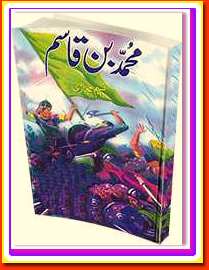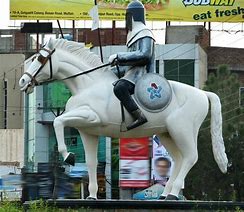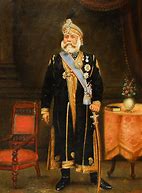History Muhammad Bin Qasim
5 min read
Early History of Muhammad Bin Qasim
Muhammad receptacle Qasim was a Bedouin general who assumed a critical part in the early Islamic victories of the Indian subcontinent. He was brought into the world around 695 CE in Taif, situate in present–day Saudi Arabia. His complete name was Muhammad canister Qasim receptacle Yusuf container Muhammad receptacle Shabib container Amr canister Malik receptacle Udad receptacle Al–Qasit container Amr container Imran container Amr canister Miserable container Hudhafah canister Muawiya receptacle Bakr receptacle Hawazin container Mansur receptacle Ikrimah canister Khasafah receptacle Qasit receptacle Khalid canister Lulay container Ghalib container Fihr receptacle Malik container Al–Nazr container Kinanah container Khuzaymah container Mudrikah canister Ilyas container Mudar canister Nizar container Ma’ad canister Adnan.

In 711 CE, at the period of around 17, Muhammad container Qasim was send on an endeavor to Sindh (present–day southern Pakistan) by the Umayyad Caliph Al–Walid I, in light of a request for help from a neighborhood sovereign named Raja Dahir. The sovereign looked for help contrary to the domineering standard of an adjoining ruler, Raja Chach, who was administering over Sindh.
Muhammad receptacle Qasim drove the Bedouin powers into Sindh, and notwithstanding being dwarfed, his tactical abilities and key discernment empower him to overcome the powers of Raja Chach in a few fights. He oversaw significant urban areas like Debal and in the long run caught the capital city of Sindh, Al–Mansurah (present–day Hyderabad in Pakistan).
Muhammad container Qasim was known for his essential keenness and generally lenient methodology towards the neighborhood populace. He permitted the vanquished regions to hold their strict and social practices, as long as they paid an expense called “jizya” and recognized the power of the Islamic Caliphate.
Sadly, Muhammad canister Qasim’s vocation was stop early in life. He was reviewed to Damascus in 715 CE, where he was detainee and later kicked the bucket in 716 CE, purportedly because of political interests inside the Umayyad Caliphate.

Regardless of his generally short military profession, Muhammad canister Qasim’s missions lastingly affected the Indian subcontinent. They laid the basis for additional Muslim attacks and the possible foundation of Islamic Sultanates and realms in the district. These improvements altogether impacted the social, strict, and political scene of South Asia.
Foundation of the Umayyad Caliphate:
The Umayyad Caliphate was one of the early Islamic traditions that managed from 661 to 750 CE. After the demise of the Prophet Muhammad in 632 CE, a progression of caliphs succeeded him as the heads of the Muslim people group. The Umayyad Caliphs were the primary genetic leaders of the Islamic world, and their capital was in Damascus, Syria.
Raja Dahir of Sindh:
Before Muhammad canister Qasim’s appearance, the locale of Sindh (in present-day Pakistan) was manage by Raja Dahir, who was a Hindu ruler. There were longstanding sea and exchange associations among Sindh and the Bedouin Promontory, prompting both amicable and unfriendly cooperations throughout the long term.

Trigger for the Attack:
In the mid eighth 100 years, a gather of Muslim merchants from the port city of Debal (presently in Sindh, Pakistan) was supposedly caught and abuse by privateers. They looked for help from the Umayyad Caliph Al-Walid I, who then, at that point, dispatched a tactical campaign to the district.
Muhammad receptacle Qasim’s Success:
In 711 CE, Muhammad container Qasim, who was scarcely in his late youngsters or mid-twenties, drove a military from the Umayyad Caliphate to attack Sindh. He is say to have shown military brightness and had the option to rapidly overcome and catch a few key urban communities, including Debal and Nirun.
Treatment of Vanquished Domains:
In spite of a few prevalent views, verifiable sources show that Muhammad container Qasim practiced relative resistance towards the neighborhood populace, including Hindus and Buddhists. He permitted them to rehearse their religions and hold their social traditions while forcing the jizya charge on non-Muslims, as ordered by Islamic regulation.
Political Interests and Review:
In spite of his victories, Muhammad receptacle Qasim’s transient ascent and. Impact in the locale appeared to have caused worry among certain groups inside the Umayyad Caliphate. Subsequently, he was review to Damascus, where he confronted detainment and, at last, passed on quite early on.
Heritage:
Muhammad receptacle Qasim’s missions laid the preparation for additional Muslim attacks in the Indian subcontinent. These attacks in the end prompted the foundation of different Islamic Sultanates and domains. For example, the Delhi Sultanate, which essentially affected the social, strict, and political scene of the district.
Hajjaj Bin Yosuf:
Hajjaj ibn Yusuf was a strong and persuasive lead representative and military officer during the Umayyad Caliphate. He was know for his severe and once in a while brutal administration. While there is no particular record counsel from Hajjaj ibn Yusuf that can be credit to him generally. Authentic sources in all actuality do make reference to a portion of his standards and ways to deal with administration. Here are a few general illustrations that could be gather from his activities:
Immovability and Severity:
Hajjaj was known for his firm and severe way to deal with administration, particularly in manage uprisings and rebellions. This approach expected to lay out and keep up with the power of the focal government.
Unwaveringness to the Caliphate:
Hajjaj was savagely faithful to the Umayyad Caliphate, and his reliability. And commitment to the focal authority were instrumental in upholding its standard in the districts he administered.
Military Methodology:
As a gifted military leader, Hajjaj grasped the significance of a thoroughly prepared and trained armed force. Military strength assumed a critical part in uniting and growing the caliphate’s regions.
Authoritative Productivity:
Hajjaj was known for his regulatory changes, include the association of expense assortment and the foundation of proficient administrative frameworks. These actions meant to fortify the administration and monetary steadiness of the realm.
Managing Difficulties:
Hajjaj showed his capacity to confront and conquer difficulties, whether from inside uprisings or outer dangers. He utilized tact and military power as important to address these difficulties.
Sober mindedness:
Hajjaj was realistic in his way to deal with administration, pursuing choices in view of common sense and the circumstance within reach. This sober mindedness permitted him to adjust to different conditions.
Information on Neighborhood Customs:
Regardless of being a Middle Easterner from the heartland of the Umayyad Caliphate. Hajjaj had a decent comprehension of the districts he represented, including their nearby traditions and customs. This information probably assisted him with administering actually.

It’s essential to take note of that while Hajjaj was without a doubt a persuasive verifiable figure. His strategies and activities were not generally lauded. A portion of his choices and strategies were view as severe and added to turmoil and obstruction during his time.
While considering verifiable figures and their recommendation, moving toward them with decisive reasoning and context is fundamental. Numerous authentic figures, including Hajjaj, worked in unambiguous verifiable and social settings that may not straightforwardly apply to contemporary circumstances. Furthermore, their activities and counsel ought to be assess through a cutting edge moral focal point. As a few verifiable practices may not line up with contemporary qualities and standards.
https://techinsea.com





